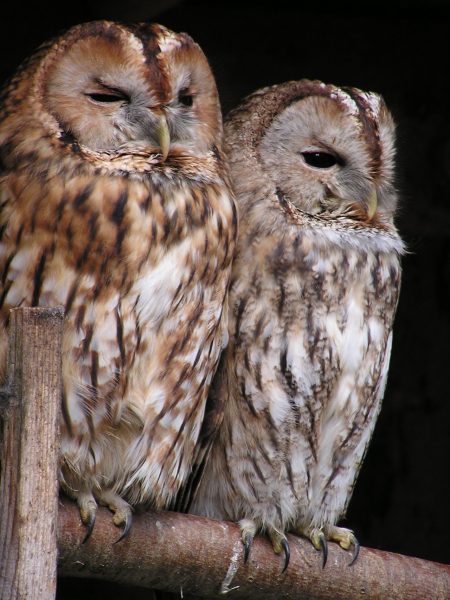How A 16th-Century Legal Document Ended Up In A Copy Of ‘Alice In Wonderland’ In Rural Australia…

"Lorraine Smith's detective story began at her second-hand bookshop in Warrnambool, Australia, when a customer came to her with what looked like a piece of paper. It had been hiding in an old copy of Alice in Wonderland, the customer said, that she had paged through while browsing in the back of the store. ... Smith grew determined to discover what this manuscript was and where it had come from. What was that obscure writing? Who was the document's original owner? And how did it end up in Australia?" … [Read More]
Andrew Bolt hurt in fall while pruning tree
AUSTRALIA Day might be a great time to celebrate cultural cliches like Vegemite, backyard cricket and barbecues, but is this really a fair depiction of our national identity?
Renowned demographer and social commentator Mark McCrindle doesn’t think so.
“Our whole identity used to be football, meat pies and caravans, now it’s overseas holidays with focaccias and more sophisticated pursuits,” he told news.com.au.
“We used to be the land of the long weekend, but now we work more hours than any other nation — in terms of working hours, plus commute — and deliver success equal to any comparable nation.”
Mr McCrindle said Australia has moved away from the remote island culture and changed our self-identity entirely.
“Now we’re regional influences across Asia, we have global connections, are exporters and have success in the global sporting, medical and business arenas,” he said.
“We’ve also changed in terms of landscape from when our icons were the beach and outback. Now, it’s more about urban environments, cafe culture, city cuisine and a 24/7 lifestyle with gentrified living.”.
30 surprising facts about Australia according to McCrindle Research and the ABS
Maroubra stabbing: Man shot dead, police officer seriously injured in 'confrontation
On 13 May 1787 a fleet of 11 ships, which came to be known as the First Fleet, was sent by the British Admiralty from England to New Holland. Under the command of Captain Arthur Phillip, the fleet sought to establish a penal colony at Botany Bay on the coast ofNew South Wales, which had been explored and claimed by Lieutenant James Cook in 1770. The settlement was seen as necessary because of the loss of the Thirteen Coloniesin North America.[9] The Fleet arrived between 18 and 20 January 1788, but it was immediately apparent that Botany Bay was unsuitable.
On 21 January, Phillip and a few officers travelled to Port Jackson, 12 kilometres (7.5 mi) to the north, to see if it would be a better location for a settlement. They stayed there until 23 January; Phillip named the site of their landingSydney Cove, after the Home Secretary, Thomas Townshend, 1st Viscount Sydney. They also made contact with the local Aboriginal people.
They returned to Botany Bay on the evening of 23 January, when Phillip gave orders to move the fleet to Sydney Cove the next morning, 24 January. That day, there was a huge gale blowing, making it impossible to leave Botany Bay, so they decided to wait till the next day, 25 January. However, during 24 January, they spotted the ships Astrolabe and Boussole, flying the French flag, at the entrance to Botany Bay; they were having as much trouble getting into the bay as the First Fleet was having getting out.[citation needed]
On 25 January the gale was still blowing; the fleet tried to leave Botany Bay, but only HMS Supply made it out, carrying Arthur Phillip,Philip Gidley King, some marines and about 40 convicts; they anchored in Sydney Cove in the afternoon. On 26 January, early in the morning, Phillip along with a few dozen marines, officers and oarsmen, rowed ashore and took possession of the land in the name of King George III. The remainder of the ship's company and the convicts watched from on board Supply.[citation needed]
Meanwhile, back at Botany Bay, Captain John Hunter of HMS Sirius made contact with the French ships, and he and the commander, Captain de Clonard, exchanged greetings. Clonard advised Hunter that the fleet commander was Jean-François de Galaup, comte de Lapérouse. Sirius successfully cleared Botany Bay, but the other ships were in great difficulty. Charlotte was blown dangerously close to rocks; Friendship and Prince of Wales became entangled, both ships losing booms or sails; Charlotte and the Friendship actually collided; and Lady Penrhyn nearly ran aground. Despite these difficulties, all the remaining ships finally managed to clear Botany Bay and sail to Sydney Cove on 26 January. The last ship anchored there at about 3 pm.[10]
The formal establishment of the Colony of New South Wales did not occur on 26 January as is commonly assumed. It did not occur until 7 February 1788, when the formal proclamation of the colony and of Arthur Phillip's governorship were read out. The vesting of all land in the reigning monarch King George III also dates from 7 February 1788.[11]
Don't change the date - Australia Day is a story of survival
Australia Day holiday 2018: Attacks on day reject our history
Oddities and outrage on Australia Day
Cockroach races, thong-throwing contests and citizenship ceremonies have become Australia Day staples but not all will be celebrating this year amid "Invasion Day" marches and debate about changing the date. As disagreement intensifies over shifting the public holiday from the January 26 anniversary ...
